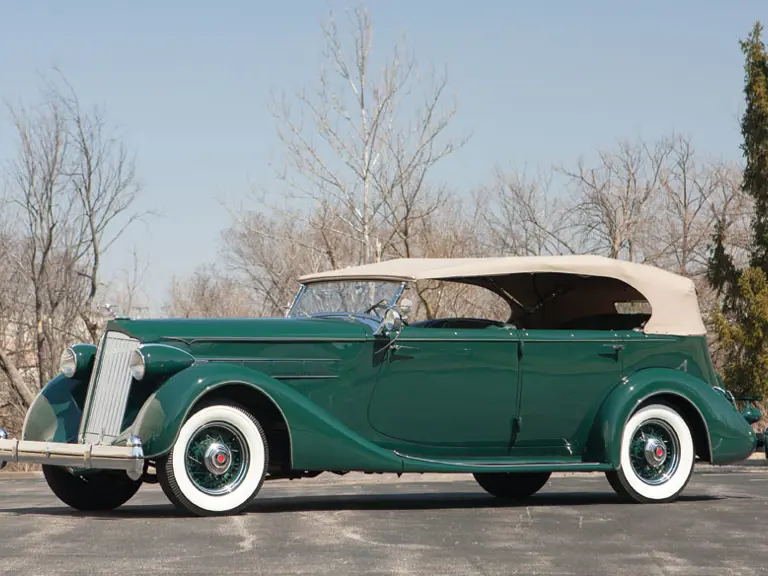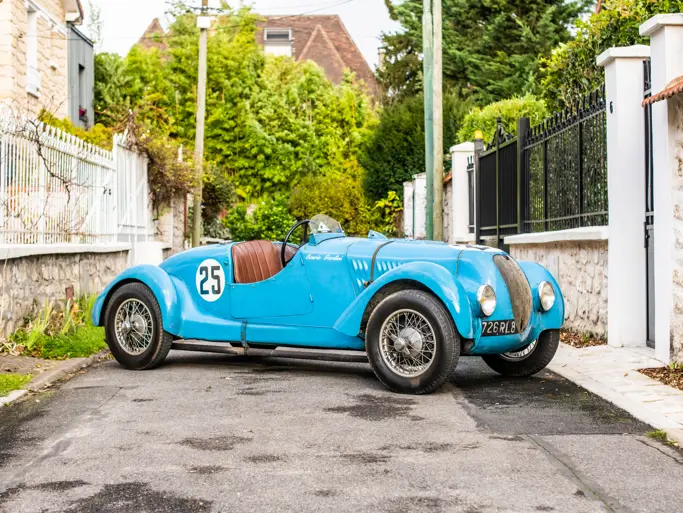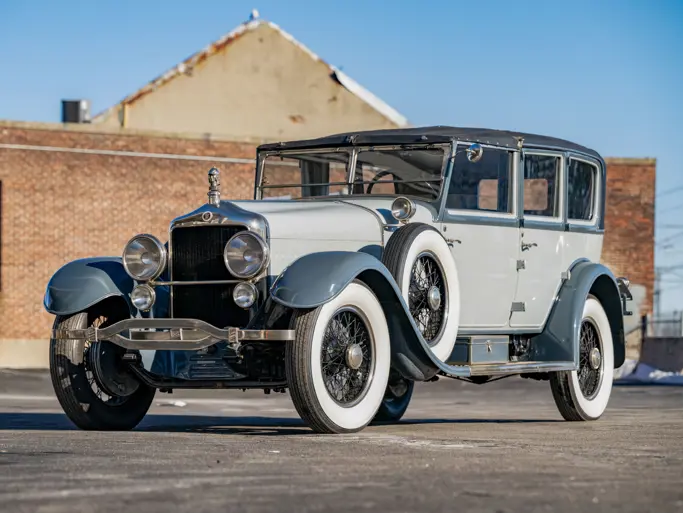In 1936, Packard was notable in the extremes. The medium-priced One-Twenty model was selling well in its second year of production, more than 55,000 cars providing needed cash in the Depression-weary market. At the other end of the catalog, the Packard Twelve offered prestige, though its price range of $3,820 to $6,435 held sales below 700 units. Between these extremes, however, lay the bulk of “senior” Packard production, the Eight and Super Eight models. These two series offered a near-identical range of body styles, differing mostly in wheelbase and engines. Since the series were almost indistinguishable by sight, it's not surprising that the less expensive Eight outsold the Super Eight three to one.
The 1936 model year comprised Packard's Fourteenth Series. The Packard Eight was available in an ambitious 17 body styles on three wheelbases. The largest of these, Series 1402, shared a 139-inch wheelbase with the Super Eight counterparts, but used a smaller engine. Except for the convertible sedan, all Series 1402 cars seated seven or eight passengers.
The bodies for Packard’s 1936 open cars were built by Murray Corporation of America but wore a “Dietrich” emblem, a legacy from designer Raymond Dietrich. Dietrich had come to Detroit from LeBaron and had set up his own design house, Dietrich, Inc., in partnership with Murray. Dietrich, Inc. supplied bodies to Lincoln, Franklin, Chrysler and Pierce-Arrow, as well as Packard. When the custom body trade ebbed in the early 1930s, Murray nudged Raymond out, but kept the Dietrich name and used the badge on prestige models. In 1936, the Phaetons were Packard's only true open cars, without side windows, and they were the last, though a few were built to special order in the Packard Twelve line in 1937.
This Packard Eight Phaeton, in the long-wheelbase Series 1402, Body Style 910, was restored by a previous owner over a four year period. It is painted Thistle Green Dark and is upholstered in dark green leather. Sold new in Pennsylvania, it remained with its original owner until 1952, when it was sold to a gentleman in New York. The second owner kept it until 1999; the third owner performed the restoration, which still looks fresh and elegant. When restoration began, the odometer read 57,000 miles. At that time the instruments were rebuilt, and the odometer set back to zero. It now reads 589, the actual miles since restoration.
The work was done extremely well, and the car turns heads whenever it is taken out. This is a truly fabulous Packard, from the raked vee’d grille through the long hood and sweeping skirted front fenders to the low raked windshield, low top and teardrop rear fenders, the lines are just exquisite. Where this car really stands out, however, is in something it lacks: side-mounted spares. Sidemounts are commonplace on cars of this era and it may be hard to grasp their absence, but it also lets the integrated, unbroken contours of the body design show themselves.
The car is reported to run flawlessly, and drives as new. It will be equally at home on tour as on the show field, and will give every satisfaction to its new owner. No other Series 1402 Phaetons are known in the major Packard clubs. Recognized by the Classic Car Club of America as a Full Classic, this is an opportunity to acquire a very rare automobile.



 | Auburn, Indiana
| Auburn, Indiana


